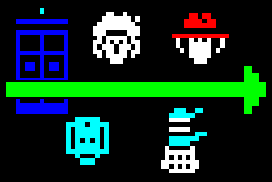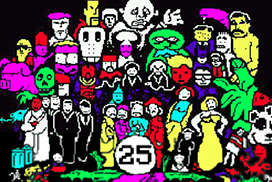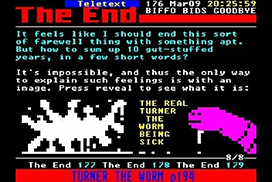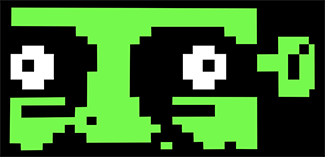
Grumble feature enabled
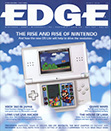
|
Plastic unfantastic
Edge #160, March 2006
I finally succumbed to a long-resisted temptation to buy myself a big, up-yours plasma telly when I got hold of my Xbox 360. Though I had to remove the front wall of my house to get it in - and murder my wife to get away with the expense - it is without a shadow of a doubt the most erotic purchase I have ever made. A lovely, crisp, high-definition screen and a sound system to rattle expletives from my neighbours.
It was a given that it'd show off 360 games to their fullest, but it has unexpectedly regenerated my love of certain older titles. I can finally play multiplayer splitscreen without my eyes melting, and I've been going back to older PS2 and Xbox titles and literally sobbing at how lovely they now look. What I do find going back to these older titles is that often they look a lot better than the first wave of Xbox 360 games.
Don't get me wrong: I think the 360 is a sublime piece of kit with the potential to blossom into something lewd and brilliant. But as it stands, on a purely visual level, I'm finding the games less immersive, and it's pretty much down to the sheer graphical prowess of the machine. What's that I'm saying? The graphics capabilities of the Xbox 360 are too powerful? Well, sort of. It's almost as if the clout the Xbox 360 has is making graphic designers a bit lazy.
Many years ago, in a previous life, I was a graphic designer. I still remember the first time I played with Adobe Photoshop. It took me ages to stop applying filters to every design. It was so easy to apply a lens flare, or a distortion effect, and take a fairly uninspired graphic to a whole new level. You could see it happening in every magazine for a few years, and I can see exactly the same thing happening on the first wave of Xbox 360 games.
Perfect Dark Zero - or, as I like to call it, Lara Croft's Adventure In Laminated Land - is a perfect example. The actual design of the visuals is, at best, uninspired, the graphics team relying entirely on the machine to do the work for them. Reflections, and bump-mapping, and lighting, and shiny-shininess. Oh, it's all a wonderful demonstration of what the 360 is capable of. But are the graphics actually better?
For my money a supposedly last-generation game like Shadow Of The Colossus is a thousand times more gorgeous than Perfect Dark Zero. Not just because of its sublime atmosphere and glorious art design, but because the characters move in a way that you believe. Even something as hackneyed and bland as Shadow The Hedgehog is more 'believable' because, again, you have a character which belongs in his world. Who knows how a cartoon hedgehog of questionable morality is supposed to move? With game designers inexplicably obsessed with recreating the real world they seem to have been on the verge of photorealism for some time, but the way characters move has been stuck in the Dark Ages for years. Or, at least, an era when everyone had rickets.
As much as I love Call Of Duty 2 - and it's quite possible to become caught up in the senses-juddering sensory onslaught - I'm always pulled out of it by the animation. Nobody moves like real people. They jerk from one cycle of movement to the next, all pretty much moving in exactly the same way. Likewise King Kong; the Xbox 360 version is one of the most visually impressive games I've ever seen. But the character movement stinks. If we can produce a game that can recreate war-torn Stalingrad, and lush, tropical islands, can it really be that much more difficult to produce a game with human characters that move like human characters?
Back when all games were about cartoon animals you accepted the movement of a sprite, because it worked in relation to the rest of its environment. Now we're being treated to gorgeous, realistic recreations of reality, but they remain populated by arthritic cripples. Even the benchmark Half-Life 2 was let down - for me - by the movement of its human characters, and Resident Evil 4 falls apart when the character switches from walking to running. The transition from one state of movement to the other is a jarring reminder that you're controlling a videogame character.
The more stylised the visuals are, the less of a problem it becomes. Any of the new Prince Of Persia games seem to work - staying true to the series' origins as an early barometer of realistic videogame animation. But scale up from there and you're immediately in trouble. All attention seems to be paid to the world, and the textures, and special lighting effects, and characters still move like they're trying not to disturb a big crap cake in their pants.
Of course, the 360 is a whole new set of kit for developers, and doubtless Rare were like kids with a new toy, slapping that horrible plasticisation on every surface and character. But I'm hoping that as subsequent waves of games start to arrive that developers learn a bit of restraint, and realise there's more to a good-looking game than ensuring your characters all have rubbery foreheads.
Mr Biffo co-founded Digitiser, Channel 4's Teletext-based videogames section, and now writes mainly for television
Do you know of any important moments from the annals of Digi history that have been omitted? If so, then mail me (superpage58@gmail.com) right now, man. Credit will be duly given for anything that gets put up.





